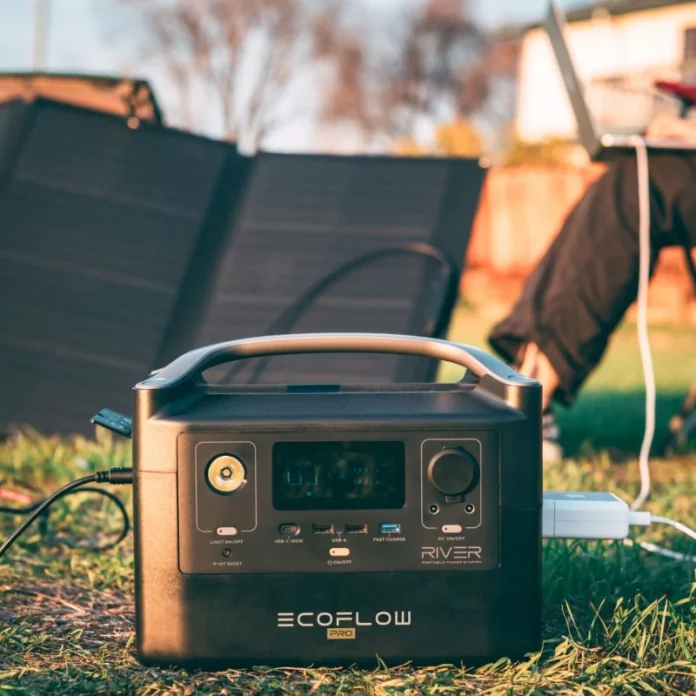In short, portable power stations provide off-grid electricity using a rechargeable battery. They’re similar to power banks but have a larger capacity, higher output power, and AC (wall) outlets so they can power anything from phones to home appliances. Lighter models can be taken camping and bigger models can serve as home backup power during outages.
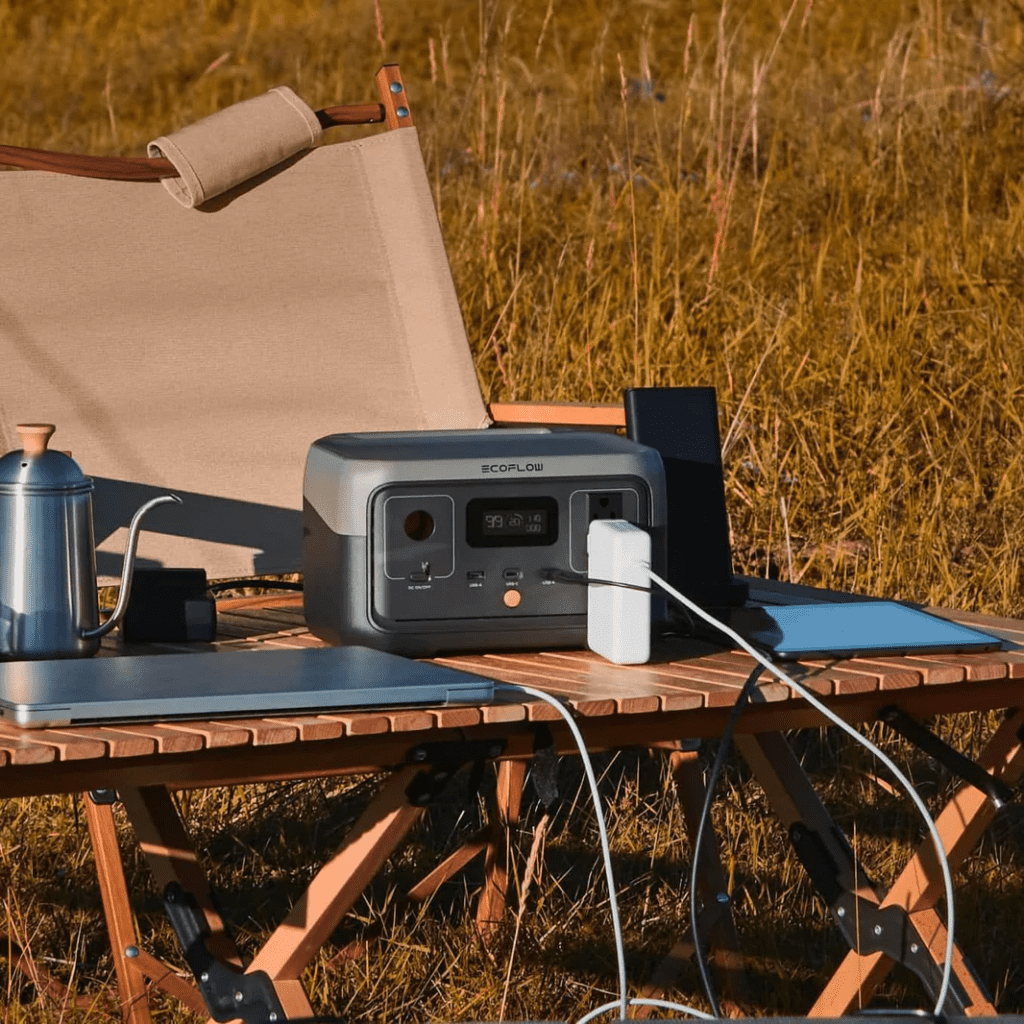
Is a portable power station just a big battery?
Is a bank just a vault? Though the battery is the main part of a portable power station, there are also a number of components and technologies that send stored energy safely and efficiently to your appliances. They have tech that makes them recharge faster, screens that show input and output, and even apps for remote energy management.
What’s the difference between a solar generator and a portable power station?
Just the names – neither a portable power station nor a solar generator create energy on their own, they just store it so you can use it anytime. The same goes for battery-powered generators. The “solar” element just indicates that generators can connect to solar panels but so can some portable power stations.
How is a portable power station different from a power bank?
Portable power stations have much more capacity and outlets than power banks, which usually only have USB outlets. Portable power stations can be used for things that would normally plug into a wall or car outlet. This is because they have enough juice to power appliances for hours and can output more electricity.
What should I look for when choosing a portable power station?
Portability, capacity, lifespan, and features are what make certain models right for some and not others. The type of battery used will have a big impact on the first three. NCM batteries are lighter while LFP (LiFePO4) batteries have a longer lifespan and greater efficiency.
Portability
Battery chemistries have moved away from the lead-acid ones found in cars, and as a result, are now much lighter and more efficient. We’re still not at the point where your house can run off of a battery the size of your phone, but we’re getting a lot closer. There are plenty of things you can use with today’s portable power stations that you couldn’t have done feasibly a few years ago.
The tradeoff between weight and capacity has reached the point where you can pick up a battery that can power a TV for 24 hours. Smaller sizes you can take on a hiking trip may be able to power small appliances for a few hours. If carrying the portable power station for long distances isn’t necessary, larger models, like the DELTA Pro usually have wheels and can power large appliances and power tools for several hours.
Capacity
How much electricity a portable power station can store is measured in watt-hours (Wh) or kilowatt hours )kWh), which is one watt of electricity being used for (you guessed it!) one hour. If you turn on a 50W bulb for 10 hours, it uses 500Wh of energy.
So, let’s say you’re throwing an outdoor summer party for 3 hours and plan to bring:
• Iceless cooler (50 watts)
• Set of lights (25 watts)
• Slow cooker (75 watts)
All of the devices above add up to 150 watts, and for 3 hours would use 450Wh. A 450Wh portable power station wouldn’t cut it though. With about 10-20% of the battery storage being lost when powering up devices, it would take a 500Wh-560Wh portable power station to make this party happen. That’s if you use if from 100% down to 0%, which is a no-no for battery health. If you plan to keep it in the 80%-20% sweet spot for maximum lifespan, you’d want a portable power station with around 800Wh-900Wh.
Lifespan
Seeing a battery as an investment is sort of a new concept.
One of the things to compare is the cycle life. It’s will be stated as something like 500 cycles to 80% capacity.
500 cycles – All rechargeable battery’s subtly lose capacity over their lifetime, and part of this is due to their charge/discharge cycles. A full cycle is when the battery has been used a total of 100% – if you use 30% today, 50% tomorrow, and 20% the next day, that’s one cycle. That’s regardless of if/how much you recharged it on these days.
80% capacity – After the 500 cycles, then what? Your battery isn’t at the end of it’s life, it’s only at 80% of it’s original health. A battery that could once power a light for 100 hours, would only be able to power it for 80 hours. When comparing lifespans between portable power stations, it’s important the health percentage is the same: a battery that’s 500 cycles to 80% capacity is better than a battery that’s 500 cycles to 50% capacity.
Features
At the very minimum, portable power stations should have USB and AC outlets. From there, the bells and whistles you may come across are a variety of outlets, various ways to charge, app functionality, and other available accessories (e.g., home integration kits and smart generators).
Maybe I should just get a gas generator.
Gas generators do move a lot of power, we’ll give them that, but… they can’t be used inside, they’re loud, and you can’t recharge them for free. There’s also the issue with being harder to start and being pretty unsophisticated.
People like portable power stations because it feels more natural to just press an “on” button and not have to winterize or check fuel levels. Gas generators were the go-to for a long time because that’s all there was, but now there are portable power stations big enough for energy demanding equipment like air conditionaers, table saws, and conventional ovens.
EcoFlow portable power stations
EcoFlow’s portable power stations have been highlighted by top reviewers worldwide for their industry-leading recharge times, high power output capacity, and iconic design.
For electricity going in, we can proudly claim the world’s fastest recharge time for portable power stations. For electricity going out, outlets of all shapes and sizes let you power pretty much anything.
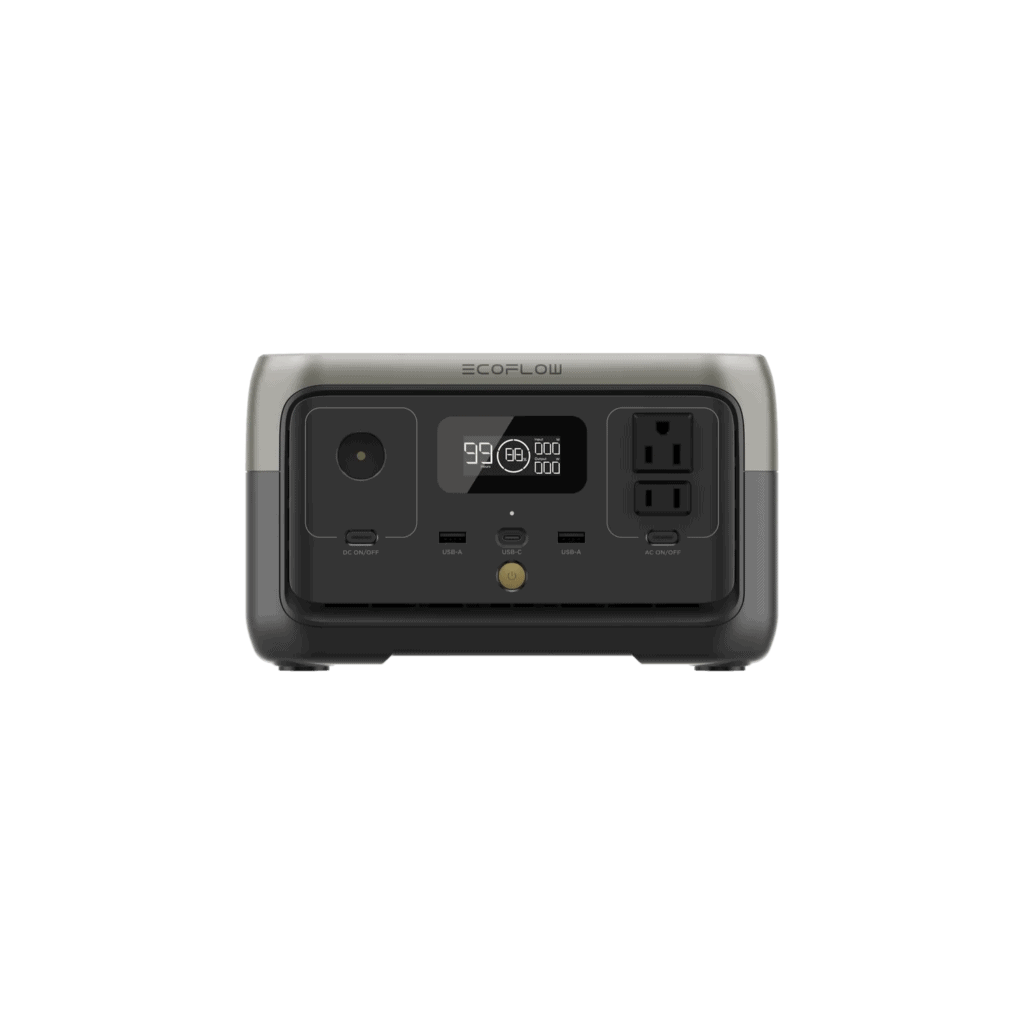
River 2
Capacity: 256Wh
Cycle life: 3000
Solar Input: 110W
AC outlets: 2

River 2 Pro
Capacity: 768Wh
Cycle life: 3000
Solar Input: 220W
AC outlets: 4
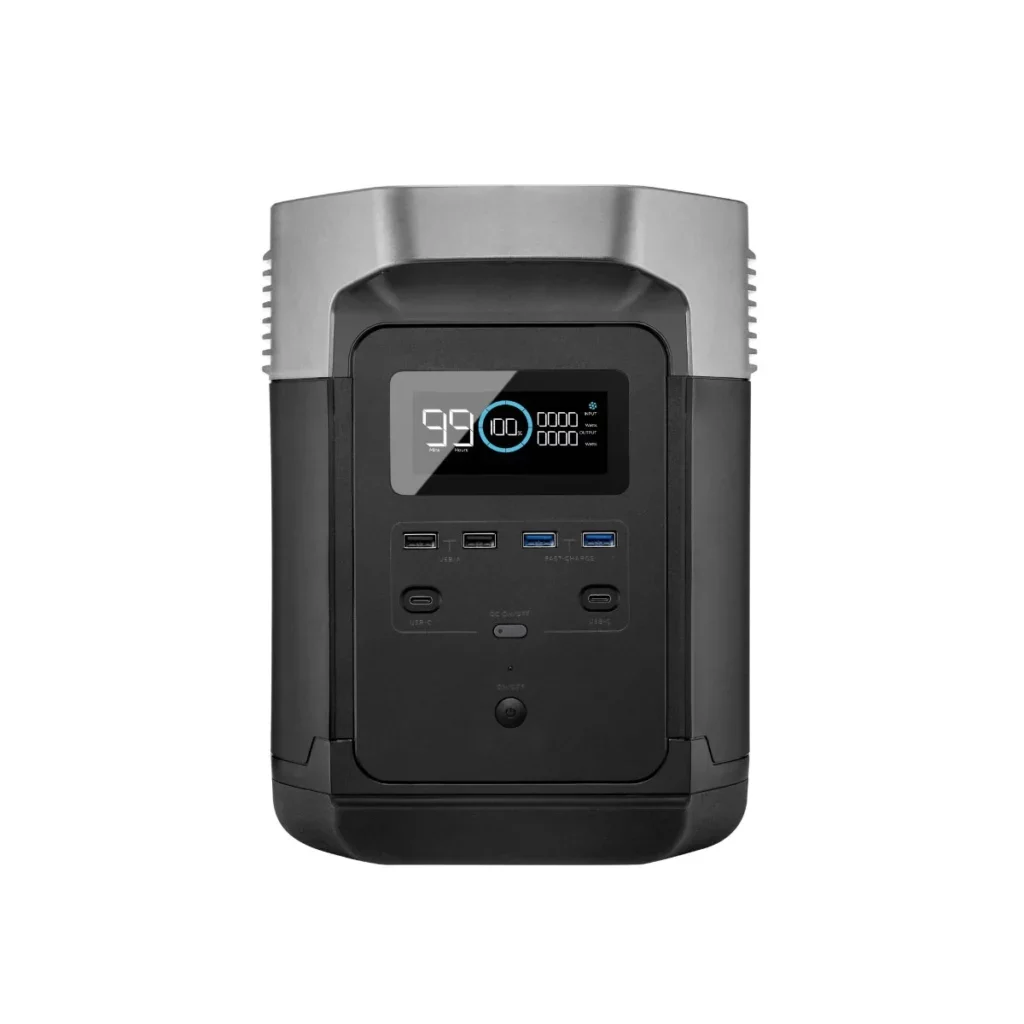
DELTA
Capacity: 1260Wh
Cycle life: 800+
Solar Input: 400W
AC outlets: 6
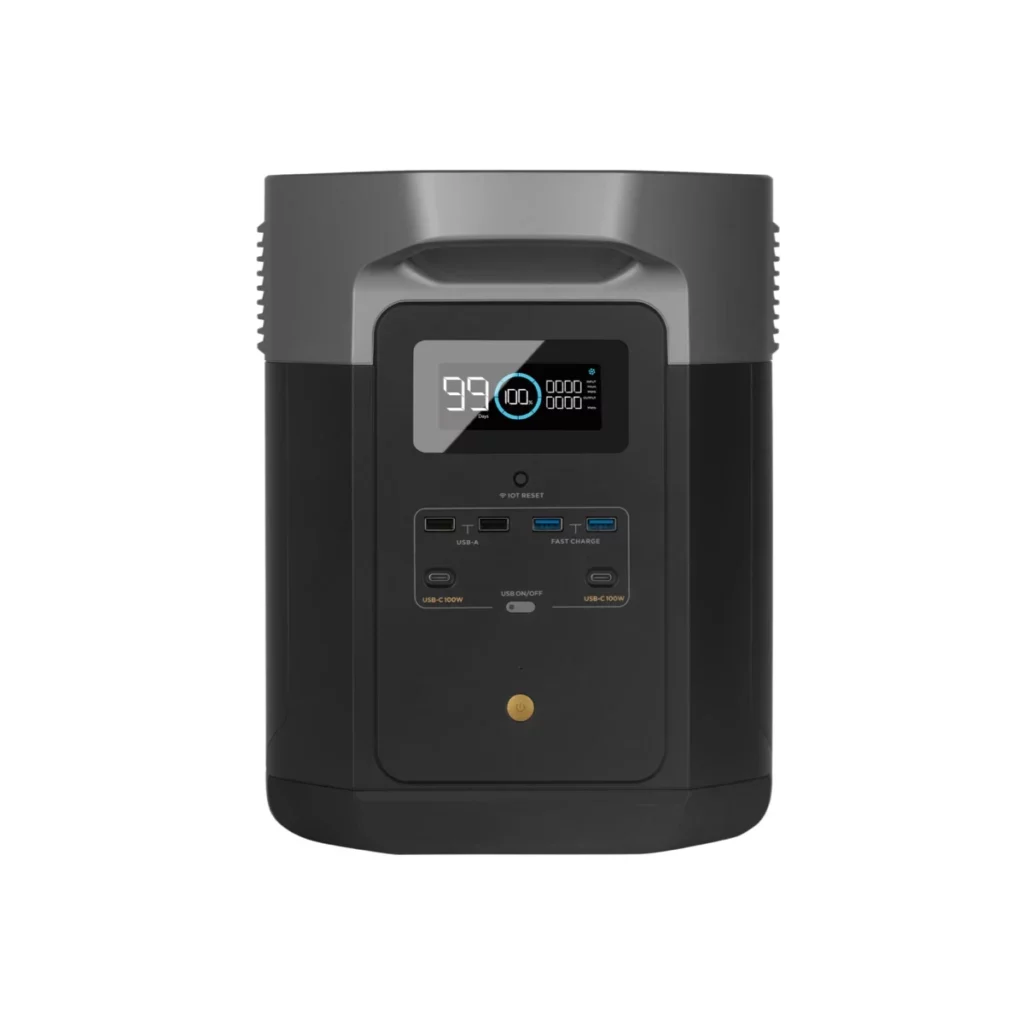
DELTA Max
Capacity: 2016Wh
Cycle life: 800+
Solar Input: 400W
AC outlets: 6
River 2 – Best for outings
Got a beach trip coming up? Me neither, but there are plenty of places you can take River 2. It’s got way more capacity than a power bank, and AC ports to power laptops, lights, and small appliances. It’s where ideas for creative get-togethers begin.
River 2 Pro – Best for outdoors
Packing a bit more capacity, it can turn a plain jane camping trip into an outdoor experience. With extra capacity, it goes beyond recharging devices; chill some drinks, cook a pizza, throw on the projector, make it fun.
DELTA – Best for outages
Though it can handle big appliances when the power goes out, why miss out on all the fun in more favorable weather? Its high output is perfect for worksites where there aren’t any plugs or for bringing some life to an outdoor venue. If you’re into RVing or boating, it’s a handy option to have aboard.
DELTA Max – Best for extended outages
Power outages following severe weather might go on for hours or even days. With one of our largest capacities available and the option to add the EcoFlow Smart Generator, DELTA Max is for those who want backup power for multiple home appliances.
